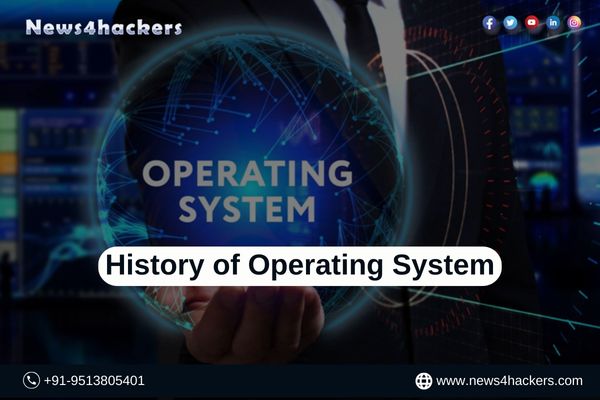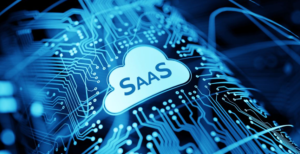History of Operating System

History of Operating System
A form of software known as an operating system serves as an intermediary between the user and the hardware. It is tasked with the management of numerous critical operations of the computer or any other device. The operating system is responsible for a multitude of functions, including but not limited to task management, garbage management, memory management, process management, disk management, I/O management, and peripherals management.

Generation of Operating System
Four generations of operating systems are detailed below.:
- The First Generation
- The Second Generation
- The Third Generation
- The Fourth Generation
1. The First Generation (1940 to early 1950s)
An operating system was not incorporated during the development of the initial electrical computer in 1940. The initial users of computers possessed absolute authority over the apparatus and developed task-specific programs using pure machine language.

When computers were first being developed, programmers were limited to performing and resolving elementary mathematical operations. The utilization of an operating system is unnecessary for these computations.
2. The Second Generation (1955 – 1965)
In the early 1950s, GMOSIS, the first operating system (OS), was created. Operating systems for IBM computers were developed by General Motors. The punch card was utilized to submit all related tasks to the operating system for completion, as the second-generation operating system utilized a single-stream batch processing system to group or batch them.

3. The Third Generation (1965 – 1980)
The second-generation operating system was founded upon a single-stream batch processing system, as it consolidated parallel tasks into groups or batches and subsequently transmitted them to it via a punch card in order to complete all tasks on a single machine. Control is delegated to the operating system upon the completion of every task, regardless of whether it occurs regularly or unexpectedly.
Following the completion of each task, the operating system performs cleanup prior to reading and commencing the next task from a punch card. Following this, large, professionally operated devices called mainframes were introduced. In the late 1960s, operating system developers successfully developed a novel operating system that exhibited multiprogramming capabilities—the ability to execute multiple duties concurrently within a single computer program.

Multiprogramming is required to develop operating systems that permit a CPU to remain active at all times by executing multiple tasks simultaneously. The advent of the DEC PDP-1 in 1961 ushered in an era of renewed expansion and advancement for the third generation of minicomputers.
4. The Fourth Generation (1980 – Present Day)
Because of these PDPs, the fourth generation of personal computers was developed. Generation IV (born 1980 and current)The development of the personal computer and the fourth iteration of operating systems are intertwined. However, there are numerous parallels between the personal computer and third-generation minicomputers. Minicomputers were marginally more expensive than personal computers, which were prohibitively costly, at the time.
The emergence of Microsoft and the subsequent development of the Windows operating system had a substantial impact on the evolution of personal computers. Microsoft initiated the development of the initial Windows operating system in 1975. Bill Gates and Paul Allen conceived the notion of propelling personal computers forward subsequent to the introduction of the Microsoft Windows operating system. Conversely, the release of the MS-DOS in 1981 encountered significant obstacles in the form of users grappling with the intricacies of its commands.

At present, Windows stands as the preeminent and most popular operating system on the market. Subsequently, Windows introduced several operating systems, the most recent of which is Windows 7. These include Windows 95, Windows 98, Windows XP, and Windows 7. At present, Windows 10 is predominantly utilized by Windows consumers. Furthermore, Apple’s operating system is widely recognized alongside Windows.
Types of Operating System
In recent years, operating systems have undergone significant development. It underwent numerous modifications prior to attaining its initial form. The progression of operating systems is the term used to refer to these modifications.

OS enhances itself through the development of novel technologies. Fundamentally, the operating system incorporated a new technological feature, thereby increasing its own strength. A year-by-year examination of the evolution of operating systems is as follows:
- No OS – (0s to 1940s)
- Batch Processing Systems -(1940s to 1950s)
- Multiprogramming Systems -(1950s to 1960s)
- Time-Sharing Systems -(1960s to 1970s)
- Introduction of GUI -(1970s to 1980s)
- Networked Systems – (1980s to 1990s)
- Mobile Operating Systems – (Late 1990s to Early 2000s)
- AI Integration – (2010s to ongoing)
1. No OS – (0s to 1940s)
We are aware that prior to the 1940s, operating systems did not exist. In the past, individuals who lacked an operating system on their computer were required to manually enter task-specific instructions in machine language (0–1). And even the most basic tasks were extremely difficult for consumers to implement at the time. In addition, it was extremely time-consuming and difficult to use. Because not all individuals possessed the requisite level of comprehension to decipher machine language, which demanded an in-depth understanding.
2. Batch Processing Systems – (1940s to 1950s)
As time progressed, bulk processing systems became available on the market. Users were now able to program their computers using punch cards and transfer the code to the computer operator. The operator would then create distinct batches of comparable types of jobs and serve each batch (group of jobs) to the CPU individually. Before executing tasks from one batch, the CPU proceeds sequentially to jobs from the other batch.
3. Multiprogramming Systems – (1950s to 1960s)
Multiprogramming was the initial operating system that sparked the true revolution. It grants the user the ability to install multiple programs into memory and allocates a distinct portion of memory to each individual program. When a program is awaiting lengthy I/O operations, the operating system grants the CPU permission to transition to the next program in the available queue in order to maintain program execution without interruption.

4. Time-Sharing Systems – (1960s to 1970s)
Multiprogramming systems are expanded to include time-sharing systems. An additional function was incorporated to prevent any single program from using the CPU for extended periods of time and to grant access to the CPU to each program at regular intervals. In essence, the operating system transitions between programs at regular intervals to ensure that each program has access to the CPU and can finish its tasks.
5. Introduction of GUI – (1970s to 1980s)
As time progressed, graphical user interfaces (GUIs) emerged. OS improved for the first time in terms of usability and revolutionized the way individuals interact with computers. The graphical user interface (GUI) incorporates visual components into computer systems, facilitating easier and more comfortable user interactions.

Users can enter commands via mouse clicks on visual elements. The following are some GUI characteristics of Microsoft’s windows: menus, icons, and windows.
6. Networked Systems – (1980s to 1990s)
The 1980s witnessed the height of the computer network mania. An operating system of a specific type is required to manage network communication. Operating systems such as Novell NetWare and Windows NT were created with the purpose of overseeing network communication. These systems enabled users to collaborate in a virtual environment and facilitated file sharing and remote access.
7. Mobile Operating Systems – (Late 1990s to Early 2000s)
In response to the software industry’s radical transformation brought about by the invention of smartphones, specialized operating systems were created to manage their functionality. Examples include iOS and Android, among others. These operating systems underwent iterative optimization and gained strength over time.

8. AI Integration – (2010s to ongoing)
The emergence of artificial intelligence occurred with the progression of time. As a result of incorporating AI technologies such as Alexa, Siri, and Google Assistant, the operating system has become significantly more effective and efficient. Together, these AI and operating system components generate an entirely new functionality, including personalized recommendations, predictive text, and voice commands.
Note: The aforementioned operating systems merely illustrate how the operating system has evolved over time through the addition of new features; this does not imply that only new-generation operating systems are in use and older OS systems are no longer utilized in the software industry; rather, all of these OS continue to be utilized based on the requirements.
FAQs
About the History of Operating System
Q.1: How has the development of computer hardware been impacted by the evolution of operating systems?
The progression and conceptualization of computer hardware have been profoundly impacted by the evolution of operating systems. Over an extended period of time, hardware manufacturers incorporated new functionalities and capabilities into their products in response to advancements in operating systems, with the intention of better supporting the features provided by the operating systems.
For example, the introduction of virtual memory in operating systems was essentially followed by the development of hardware memory management units (MMUs) to manage memory addressing and protection. In a similar vein, the need for multiplexing and multiprocessing capabilities in operating systems drove the development of more efficient and powerful processors and other hardware elements.
Q.2: How has the development of distributed systems impacted how operating systems have changed over time?
Operating systems have been profoundly influenced by the proliferation of distributed systems, including cloud computing and client-server architectures. Operating systems were required to facilitate resource sharing across multiple machines, network communication, and distributed file systems. Additionally, distributed operating systems were created to provide coordination, scalability, and fault tolerance in distributed environments.
The aforementioned alterations enhanced the capacity to oversee resources across interconnected systems through the implementation of distributed file systems, remote procedure calls, and networking protocols.
Q.3: What is the mother of operating system?
The matriarch of operating systems is UNIX. Unix is the foundational operating system upon which all others, including Ubuntu, Solaris, POSIX, and so forth, are built.
About The Author:
Yogesh Naager is a content marketer who specializes in the cybersecurity and B2B space. Besides writing for the News4Hackers blog, he’s also written for brands including CollegeDunia, Utsav Fashion, and NASSCOM. Naager entered the field of content in an unusual way. He began his career as an insurance sales executive, where he developed an interest in simplifying difficult concepts. He also combines this interest with a love of narrative, which makes him a good writer in the cybersecurity field. In the bottom line, he frequently writes for Craw Security.
READ MORE ARTICLE HERE









